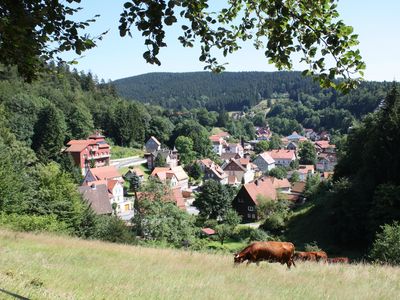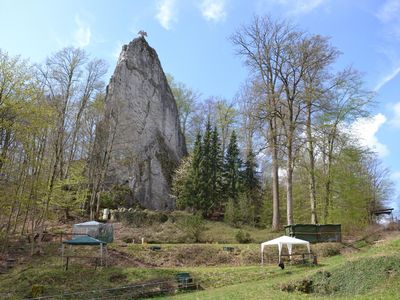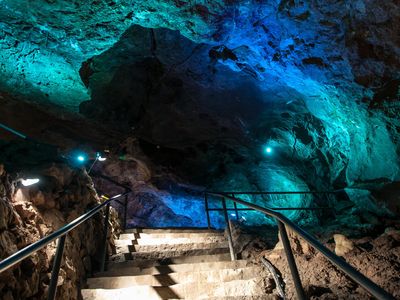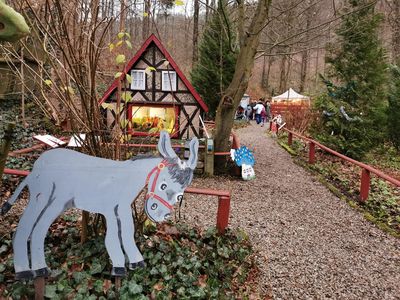The mining town of Bad Grund, located on the western edge of the Harz, is the oldest in the Upper Harz region, and has been officially recognised as a spa town since 1855. It is situated in a romantic, open valley surrounded by beautiful deciduous and coniferous forests.
The Eisensteinstollen (Iron Ore Tunnel) in Bad Grund is the only state-approved health resort with medicinal therapy for respiratory diseases in Northern Germany. The Healing Gallery itself is certified with the highest honours.
Must-see sights in Bad Grund are the HöhlenErlebnisZentrum Iberg Dripstone Cave (CaveExperienceCentre) with a fascinating story of family genealogy that stretches back 3,000 years, the Clock Museum with more than 1,600 exhibits, the Shaft Mine Knesebeck, which belongs to the UNESCO World Heritage and is located in the Mining Museum Knesebeckschacht, the chimes on the market square, the Märchental (Enchanted Valley) and the more than 40 metre high Lime Rock 'Hübichenstein' near Bad Grund.
The 'WeltWald Harz' leads visitors to an exotic landscape. The collection, which consists of about 100 acres and 600 trees from all over the world, is one of the largest botanical arboretums of Germany. Information boards, which explain the tree species and their origins, are placed along the walking trails. Apart from trees, original totem poles are located in the North American part of the forest.
The Harz Red Cattle, which are resident in Bad Grund, rank among the endangered cattle breeds, and are one of the sights of the town.
Sport enthusiasts will discover a large choice of recreation possibilities in Bad Grund: hiking trails König-Hübich-Route and Harzer Baudensteig, the mountain-bike network of trails of the Volksbank Arena Harz and many opportunities for fishing, mini-golf and tennis. Owing to the Cross-Mountain Ski Trail Kreuzberg and several toboggan slopes, Bad Grund is a popular holiday destination in the winter.




